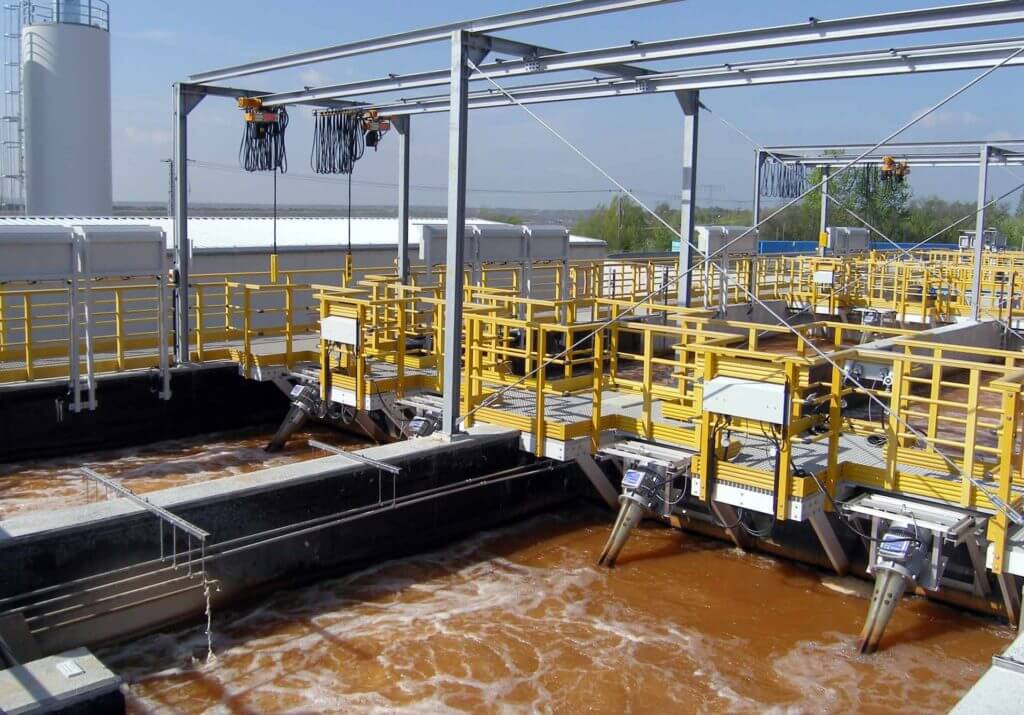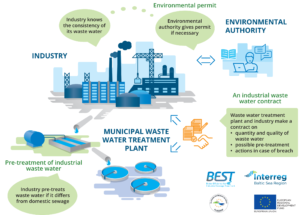Industrial Waste Water Treatment-- Industrial-Grade Water Filtration and Filtration Solutions
Industrial Waste Water Treatment-- Industrial-Grade Water Filtration and Filtration Solutions
Blog Article
Advancements and Advancements in Hazardous Waste Water Treatment Technologies
The landscape of industrial wastewater treatment is undergoing a transformative change, driven by innovations that boost both effectiveness and sustainability. Emerging innovations, such as membrane bioreactors and microbial gas cells, are redefining contaminant elimination procedures while adding to power generation. Moreover, resource recuperation methods are getting traction, lining up with round economic climate concepts. As regulative criteria evolve, the combination of AI and machine discovering right into wastewater management systems guarantees to ensure and enhance procedures conformity. However, the full effects of these improvements elevate crucial concerns concerning their scalability and long-term effect on market methods.
Summary of Waste Water Treatment Technologies
Wastewater therapy modern technologies incorporate a variety of approaches created to eliminate contaminants from industrial effluents prior to their launch into the environment. These technologies are critical for maintaining environmental balance and guaranteeing compliance with ecological guidelines. The main categories of wastewater therapy consist of physical, chemical, and biological methods, each offering unique purposes based on the nature of the contaminants existing.

Biological treatment techniques use microorganisms to break down raw material, making them particularly efficient for organic-rich effluents. Strategies like turned on sludge and biofilm reactors harness the all-natural destruction capabilities of bacteria, resulting in considerable decreases in biochemical oxygen need (FIGURE)
Advanced Filtration Techniques
Advanced filtering strategies represent a vital advancement in the world of commercial wastewater therapy, boosting the performance of impurity elimination procedures. Industrial Waste Water Treatment. These approaches incorporate a variety of modern technologies, consisting of microfiltration, ultrafiltration, nanofiltration, and turn around osmosis, which give consecutive obstacles for numerous fragment dimensions and chemical structures
Microfiltration and ultrafiltration use membrane systems to remove suspended solids, bacteria, and larger natural particles, boosting the high quality of effluent before additional treatment. Nanofiltration bridges the gap in between ultrafiltration and turn around osmosis, effectively removing divalent ions and natural substances, thus reducing the lots on downstream procedures.
Reverse osmosis supplies the highest degree of purification by allowing only water and tiny molecules to go through its semi-permeable membranes, making it optimal for reclaiming top quality water from industrial effluents. Current improvements in membrane technology, consisting of the development of even more fouling-resistant and resilient materials, have actually substantially improved functional effectiveness and reduced prices.
Integrating these advanced filtration strategies not only boosts the general treatment procedure but additionally adds to sustainability initiatives by allowing water reuse and source recovery in commercial settings. (Industrial Waste Water Treatment)
Organic Treatment Innovations

Moreover, the advancement of engineered organic systems, such as membrane layer bioreactors (MBRs), combines organic treatment with advanced membrane layer filtering. This integration enables higher effluent top quality and reduced impact, making it appropriate for space-constrained commercial facilities. Innovations in genetically crafted microorganisms have actually also arised, enhancing the biodegradation of details pollutants, such as pharmaceuticals and hefty metals, that are commonly challenging to get rid of.
Furthermore, the execution of bioaugmentation techniques, where beneficial microorganisms are presented to improve the existing organic treatment processes, has actually shown encouraging cause enhancing therapy performance. These sites advancements collectively symbolize a fad towards even more effective and sustainable organic treatment methods that can adjust to the developing intricacies of commercial wastewater streams. As industries remain to focus on ecological compliance, these biological advancements will play an important role in wastewater management.

Resource Recovery Approaches
In industrial setups, the combination of resource recuperation techniques has actually come to be increasingly essential for improving sustainability and reducing waste. These approaches focus on extracting useful materials and power from wastewater streams, thereby changing potential toxins into reusable sources.
One popular strategy is nutrition recuperation, where nitrogen and phosphorus, typically existing in excess in wastewater, are recorded and converted into plant foods. This not only minimizes environmental effects but likewise provides a circular economic situation service for farming applications. Additionally, technologies such as anaerobic food digestion allow for the conversion of natural waste right into biogas, a renewable energy resource that can balance out nonrenewable fuel source use in industrial operations.
Additionally, advanced filtering and membrane modern technologies facilitate the recuperation of commercial byproducts such as salts and steels. These recouped products can be reintegrated right into manufacturing processes, reducing the demand for virgin resources.
Future Trends in Waste Water Monitoring
As markets progressively focus on sustainability, the future of wastewater administration is set to undergo significant makeovers. Technical advancements, such as fabricated intelligence and maker learning, will allow much more effective monitoring and management of wastewater systems. These modern technologies can anticipate maintenance needs, optimize therapy procedures, and enhance decision-making, ultimately reducing operational prices and environmental impact.
Moreover, the combination of circular economic climate concepts will certainly play a vital role in wastewater administration. Industries are expected to move in the direction of systems that not just treat wastewater yet likewise recover beneficial resources, such as nutrients, water, and energy. This shift will certainly lessen waste and advertise the reuse of products, lining up with worldwide sustainability objectives.
Arising treatment strategies, such as membrane bioreactors and progressed oxidation procedures, will further improve the effectiveness of wastewater treatment, permitting higher high quality effluents suitable for reuse. Furthermore, governing structures are most likely to develop, highlighting more stringent requirements for wastewater discharge and motivating industries to adopt ingenious therapy remedies.
Verdict
Finally, the advancement of commercial wastewater therapy innovations shows a significant change additional resources in the direction of boosted performance and sustainability. Developments in advanced filtering methods, biological treatments, and resource healing methods highlight the industry's dedication to environmental stewardship. The integration of synthetic intelligence and machine discovering additionally maximizes these procedures, making certain regulative conformity and advertising a round economy. Proceeded advancements in these locations will certainly play a critical role in forming the future of wastewater management and shielding important water resources.
The landscape of commercial wastewater treatment is going through a transformative change, driven by innovations that improve both effectiveness and sustainability.Wastewater treatment innovations encompass a range of techniques created to remove pollutants from commercial effluents prior to their launch into the atmosphere.Utilizing the power of biological processes has led to significant technologies in the treatment of industrial wastewater.Additionally, the implementation of bioaugmentation methods, where helpful germs are introduced to enhance the existing organic therapy see this page processes, has actually revealed promising results in improving therapy performance. These developments collectively indicate a pattern towards more reliable and sustainable biological therapy approaches that can adapt to the advancing intricacies of industrial wastewater streams.
Report this page